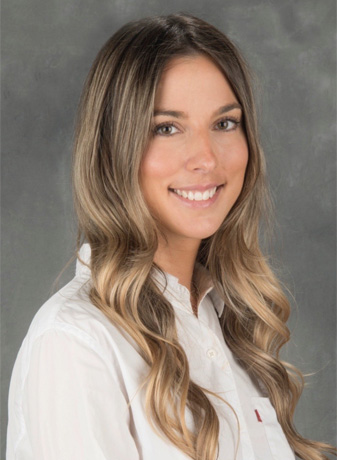A mastopexy, or breast lift, is a surgical procedure where the excess and saggy skin and tissue of the breast is reorganized so as to raise the nipples and areolas, giving the chest a more harmonious appearance.
Generally, patients who consider a mastopexy wish to give their breasts a younger and perkier appearance. A number of factors can influence breast shape; significant weight loss or age can cause the skin to stretch and lose elasticity, leaving breast tissue saggy and deflated. In medical terms, this condition is referred to as ptosis.
A breast lift rejuvenates the appearance of breasts by tightening the excess tissue in order to reposition the nipples and areolas. However, the volume of the breasts is not increased. In certain patients, this procedure is combined with a breast augmentation to improve the shape as well as the volume of the breasts.
” For many women, a breast lift helps improve their body image and even boosts their self-esteem and confidence. “

What are the different mastopexy techniques? What types of incisions are made?
All mastopexy procedures begin with a circular incision around the areola. This incision gives the surgeon the necessary access to reposition the nipple and areola on the breast, reducing its size if necessary. The structures leading to the nipple (including lactiferous ducts, sensory nerve fibres and vital blood vessels) are preserved during the surgery.
Breast ptosis refers to breasts which have lost their roundness and sag too low on the chest. The nipples and areolas also sag, sometimes to the point that they point downwards. As a result of the stretched skin, the breasts appear “deflated”.
During a mastoplexy, the breast tissue is redefined, the nipples and areolas are repositioned to achieve a more youthful appearance, and the excess skin is removed. In patients whose nipples and areolas are enlarged and stretched, the diameter of the areolas will be reduced during the procedure so as to achieve esthetic proportions with the breasts.
Periareolar technique
This incision applies to breasts which only need to be raised slightly. A circular incision is made at the juncture of the pigmented skin and the surrounding skin. This technique is not applicable in breasts presenting excess skin or requiring a significant lift. The periareolar technique is sometimes used in a breast augmentation that involves a repositioning of the nipples and areolas, but that does not require any major change to the shape or position of the breast tissue.
Mastopexy combined with a breast augmentation
A breast implant can be inserted during a breast lift in order to restore the volume lost following a pregnancy or significant weight loss. On occasion, inserting a breast implant can be enough to subtly raise the nipple. However, a combination of both a breast augmentation and lift is recommended in patients whose breasts present significant ptosis, and who wish to increase breast volume and perkiness.
Inverted “T" technique
A common mastoplexy technique involves a circular incision around the nipple and areola, a vertical incision between the lower part of the areola and the inframammary fold, and a. short horizontal incision in the inframammary fold.
The periareolar scar is concealed in the juncture of the pigmented skin and the surrounding skin. The vertical scar will fade over time, often becoming imperceptible. The inframammary scar is not visible from the front or from above; it is visible when lifting and carefully inspecting the breasts. In short, the incisions made using this technique are not visible when wearing a bra or bikini top.
This method is most effective for raising the breast while maintaining an appealing three-dimensional shape. The nipple and areola remain attached to their respective lactiferous ducts, blood vessels and sensory nerve fibres, so that the breasts may regain sensation and function (breastfeeding) following the procedure.
Vertical technique
This procedure is recommended in patients with little excess skin in the breasts, and with sagging nipples/areolas. This technique also includes a circular periareolar incision, as well as a vertical incision beginning at the bottom of the areola. Contrary to the inverted T technique, this method does not involve a horizontal incision in the inframammary fold.
Frequently asked questions
The breast lift procedure in itself lasts approximately two and a half hours, but the surgery may be longer if combined with other procedures. However, you must plan some time for preparation before entering the operating room (30 to 45 minutes) and time to recover from the general anesthesia (1 to 3 hours). You should therefore plan to take a day off from work for your surgery.
Infections
As with any surgical procedure, your body’s protective barrier, i.e., your skin, is momentarily interrupted. In order to prevent post-operative infections, you will receive antibiotics before the surgery.
Despite the use of standard preventive measures and antiseptic techniques, there remains a slight chance of infection at the surgery site. An infection could cause redness, pain, heat or swelling in the breast. It may also cause a fever of 38.5oC or more. We recommend that you contact us immediately if you notice any of these symptoms, so that we may perform the appropriate tests and administer any necessary treatments.
Hematoma
During the surgery, we are careful to cauterize the blood vessels, so as to minimize blood loss. It is normal for there to be traces of blood in your dressings. Bleeding rarely continues beyond the surgery and in few cases, a hematoma (accumulation of blood) may form in the breast.
If you experience significant and disproportionate pain in one of your breasts within 24 to 48 hours after your surgery, if your breast seems bigger (swollen), contact us so that we may reexamine you prior to your follow-up appointment.
You must avoid any intense physical exercise, raising your arms above your shoulders and lifting weights heavier than 5 pounds during the first two to three weeks following your surgery in order to give your body a chance to heal comfortably. You can resume your normal physical activities four to six weeks after your surgery. It is important for you to listen to your body. It will tell you if you are ready to exercise and how much exercise you can handle. Pain or discomfort when exercising is a sign that your body is not quite healed and that it would be better to wait a few weeks before trying again.
As long as the tissue and ducts of the breast are not divided during surgery, all of the structures leading to the nipple (including lactiferous ducts, sensory nerve fibres and vital blood vessels) will remain intact.
Your ability to breastfeed should not be altered in any way following a breast lift, assuming that you were fully able to breastfeed following pregnancy prior to the surgery.
The sensory nerve fibres leading to the nipple are not divided during a breast lift. Nipple sensitivity should remain unchanged following the procedure.
The ideal patient for this procedure is a woman in good general health, physically fit and at a healthy body weight (or has reached a stable weight after significant weight loss).
Generally, these women are satisfied with their breast volume, but their breasts lack firmness and are sagging. Furthermore, for some women, the nipples and areolas are pointing downwards. These women often express that they would like to achieve an effect similar to the appearance of their breasts when wearing a bra.
Mothers may be interested in regaining the appearance they had while breastfeeding or before their pregnancies. For others, a mastopexy is an attractive solution to correct visibly asymmetrical breasts (different shapes or sizes) or to improve tubular breasts.
The effects of a breast lift are permanent. Your breasts will maintain their new natural look and lift for many years. However, their shape will continue to evolve with age.
A breast lift will not interfere with the results of a self-exam, a physical examination by a doctor, an ultrasound, an MRI or any other method of screening for cancer.
Furthermore, a breast lift does not change your personal risk of breast cancer. If you are over the age of 50, a basic preoperative mammogram is recommended before any breast surgery. If you are under 50 years of age, preoperative screening is only recommended if a member of your immediate family has a history of breast or ovarian cancer. During the consultation, your surgeon will request information regarding your medical history and refer you to specialists or for screening tests as needed.
The final cost of your treatments will be calculated on an individual basis in accordance with your needs. The cost of a mastoplexy generally varies between $8,130 and $10,910. When combined with a breast augmentation, the total cost can range between $13,075 and $18,945. Additional charges may apply if the patient has a particular condition or if different surgeries are combined.
Our specialists

Plastic and aesthetic surgeon
Dr. Mario Luc
- 450-241-6045

PLASTIC AND AESTHETIC SURGEON
Dr. Marie-Pascale Tremblay-Champagne
- 450-241-6045

PLASTIC AND AESTHETIC SURGEON
Dr. Camille Vallée-Gravel
- 450-241-6045

PLASTIC AND AESTHETIC SURGEON
Dr. Jennifer Dolmajian
- 450-241-6045
Cosmetic Surgeries
Make an appointment with a surgeon
Call US
We would be glad to help you through the process by answering all your questions and allaying your concerns.